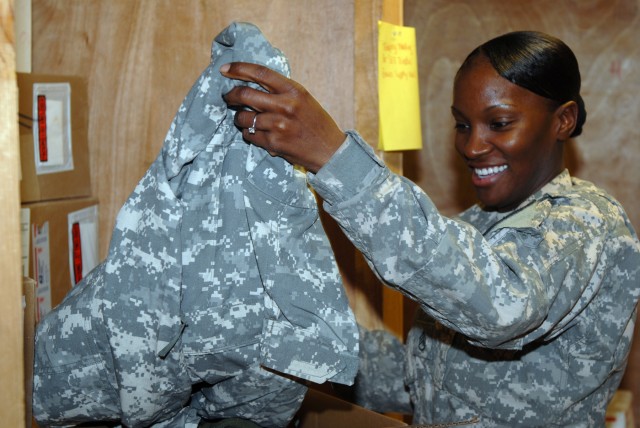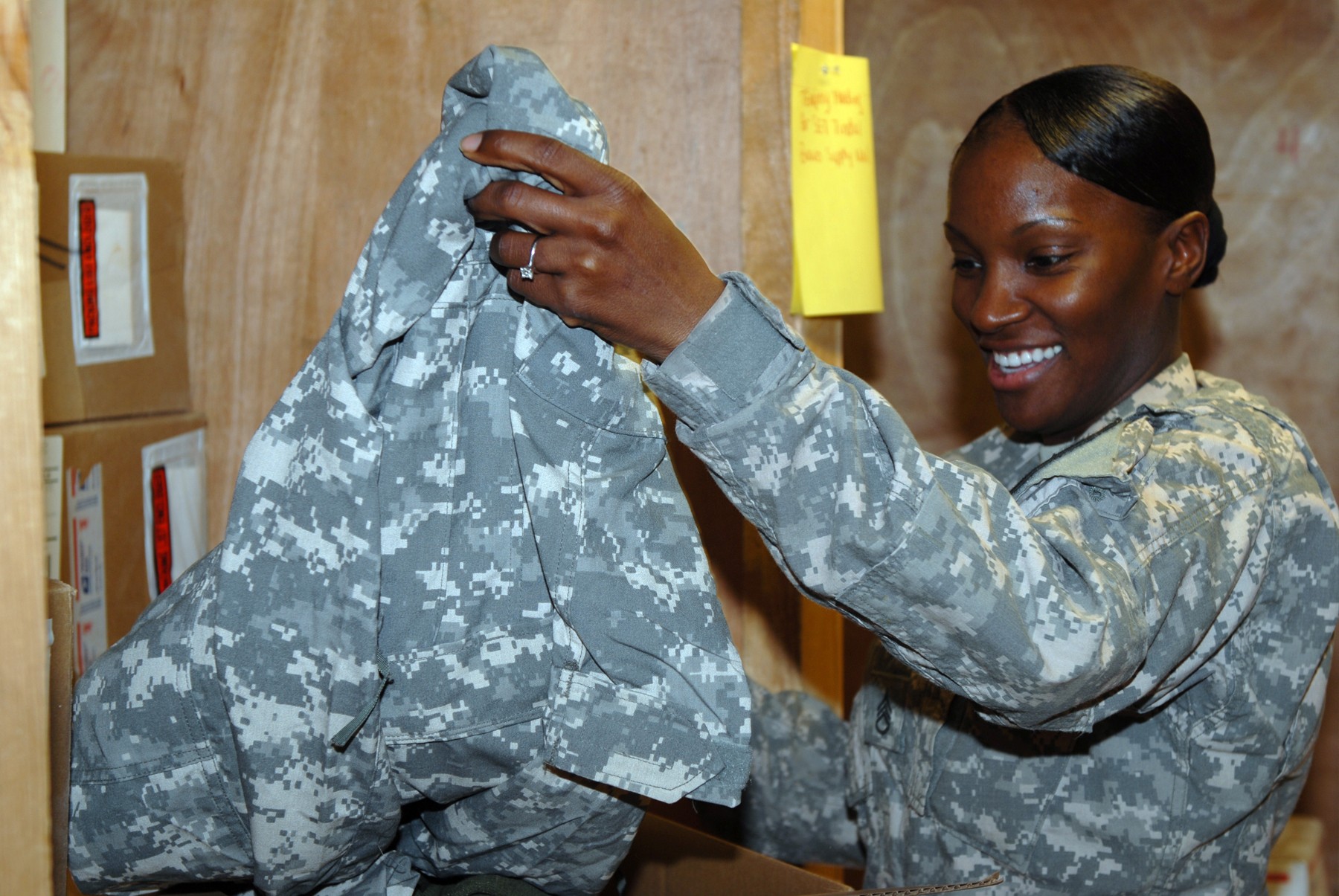BAGHDAD- In a combat zone, Soldier's uniforms are subject to more than the normal wear and tear. Due to the nature of Soldier's missions, uniforms may become torn, the soles of boots worn down and protective eyewear can break. To help Soldiers replace unserviceable uniforms, the Army has implemented a web-based program within the last four years specifically for Soldiers deployed to combat zones.
"This program is like direct exchanging over the web," said Sgt. Maj. Roderick Taylor, supply and service sergeant major for Division Special Troops Battalion, 1st Cavalry Division. "It's to sustain Soldiers in theater."
The Army Direct Ordering program is for Soldiers serving in Operations Iraqi and Enduring Freedom to exchange worn and ineffective pieces of Organizational Clothing and Individual Equipment (OCIE) at no cost to Soldiers, said Taylor. The program was directed by the Army Chief of Staff and put into effect on March 1, 2005.
The program covers over 45 items of OCIE. The most common items ordered are Army Combat Uniforms, T-shirts, belts, unit patches, nametapes, goggles, helmet covers and boots. It will not cover the Individual Physical Fitness Uniform until April 15, 2009.
According to Taylor, the program is funded by the Global War on Terrorism fund, where each unit is allocated $55 multiplied by the number of Soldiers for the duration of their deployment, except for the first and last months. Funds for the program do not roll over to the following month and are not retroactive. At the beginning of each month, funds for the unit will be replenished.
"I don't believe a Soldier should have to pay for uniforms out of their own pocket," said Staff Sgt. Dawn Coleman, supply sergeant for Company A, DSTB, 1st Cav. Div. "This program helps, because it keeps Soldiers in the proper uniform."
Although funds are for each individual Soldier, it is at the unit commander's discretion on the amount of money spent per Soldier for that month.
"Because a pair of boots costs more than $55, the unit commander can allot more money to an individual Soldier that month," said Taylor. "It balances itself out."
"Each unit may do it differently, but I choose to take care of the lower enlisted first, and then senior enlisted and commissioned officers," said Coleman.
However, funding is only available to units after complete enrollment in the ADO program. According to Taylor, there are two ways to enroll.
An individual Soldier can enroll themselves via Army Knowledge Online through the Kentucky Logistics Operational Center website, or units can designate a unit representative to enroll the unit as a whole. If enrolled as a unit, the unit representative or point of contact can order for Soldiers due to limited internet access, said Taylor.
Though Soldiers can enroll and order through the program individually, all orders must be approved by the unit commander or POC. This is to prevent frivolous and fraudulent spending of funds, added Taylor.
Once the order is placed, KYLOC ships it directly to the Soldier within three days. It is mailed to the unit's Army Post Office mailing address, continues Taylor.
It's like receiving a box from home, said Taylor.
Taylor added, Soldiers should know that ADO is for sustainment only. It was not designed for initial entry, shortages or catastrophic losses. Though there is no limit within the allocated budget to the amount spent each month, units should spend only as necessary.
Through ADO, deployed Soldiers are able to remain within standard regardless of mission or rank. With over 1,000 units already enrolled, the list grows as more units and Soldiers learn about the program. For Soldiers who have questions concerning the ADO program they should contact their unit supply sergeant or unit representative.


Social Sharing